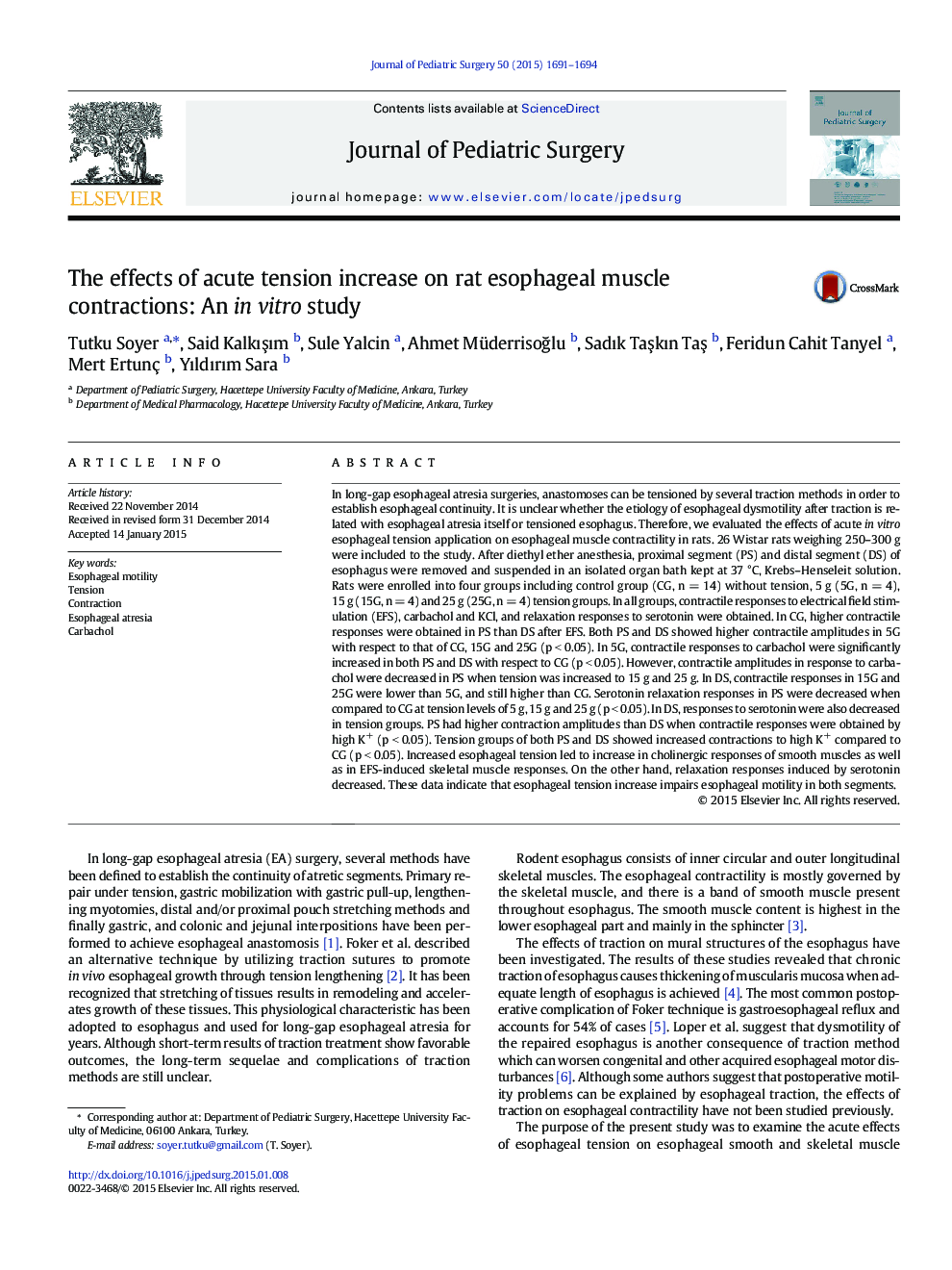| Article ID | Journal | Published Year | Pages | File Type |
|---|---|---|---|---|
| 4155001 | Journal of Pediatric Surgery | 2015 | 4 Pages |
In long-gap esophageal atresia surgeries, anastomoses can be tensioned by several traction methods in order to establish esophageal continuity. It is unclear whether the etiology of esophageal dysmotility after traction is related with esophageal atresia itself or tensioned esophagus. Therefore, we evaluated the effects of acute in vitro esophageal tension application on esophageal muscle contractility in rats. 26 Wistar rats weighing 250–300 g were included to the study. After diethyl ether anesthesia, proximal segment (PS) and distal segment (DS) of esophagus were removed and suspended in an isolated organ bath kept at 37 °C, Krebs–Henseleit solution. Rats were enrolled into four groups including control group (CG, n = 14) without tension, 5 g (5G, n = 4), 15 g (15G, n = 4) and 25 g (25G, n = 4) tension groups. In all groups, contractile responses to electrical field stimulation (EFS), carbachol and KCl, and relaxation responses to serotonin were obtained. In CG, higher contractile responses were obtained in PS than DS after EFS. Both PS and DS showed higher contractile amplitudes in 5G with respect to that of CG, 15G and 25G (p < 0.05). In 5G, contractile responses to carbachol were significantly increased in both PS and DS with respect to CG (p < 0.05). However, contractile amplitudes in response to carbachol were decreased in PS when tension was increased to 15 g and 25 g. In DS, contractile responses in 15G and 25G were lower than 5G, and still higher than CG. Serotonin relaxation responses in PS were decreased when compared to CG at tension levels of 5 g, 15 g and 25 g (p < 0.05). In DS, responses to serotonin were also decreased in tension groups. PS had higher contraction amplitudes than DS when contractile responses were obtained by high K+ (p < 0.05). Tension groups of both PS and DS showed increased contractions to high K+ compared to CG (p < 0.05). Increased esophageal tension led to increase in cholinergic responses of smooth muscles as well as in EFS-induced skeletal muscle responses. On the other hand, relaxation responses induced by serotonin decreased. These data indicate that esophageal tension increase impairs esophageal motility in both segments.
